-
 Bitcoin
Bitcoin $79,012.1761
-4.78% -
 Ethereum
Ethereum $1,570.4026
-12.09% -
 Tether USDt
Tether USDt $0.9994
-0.02% -
 XRP
XRP $1.9666
-7.46% -
 BNB
BNB $555.4328
-6.02% -
 USDC
USDC $0.9999
-0.01% -
 Solana
Solana $107.5201
-9.67% -
 Dogecoin
Dogecoin $0.1506
-10.27% -
 TRON
TRON $0.2315
-2.62% -
 Cardano
Cardano $0.5814
-10.27% -
 UNUS SED LEO
UNUS SED LEO $8.8602
-2.17% -
 Chainlink
Chainlink $11.3795
-10.04% -
 Toncoin
Toncoin $3.0063
-7.92% -
 Stellar
Stellar $0.2370
-5.38% -
 Avalanche
Avalanche $16.1395
-9.48% -
 Shiba Inu
Shiba Inu $0.0...01134
-7.55% -
 Sui
Sui $1.9135
-13.06% -
 Hedera
Hedera $0.1425
-11.59% -
 Polkadot
Polkadot $3.7145
-5.76% -
 MANTRA
MANTRA $5.9824
-4.31% -
 Bitcoin Cash
Bitcoin Cash $272.1059
-9.40% -
 Litecoin
Litecoin $71.2279
-13.11% -
 Dai
Dai $1.0000
-0.02% -
 Ethena USDe
Ethena USDe $0.9987
-0.05% -
 Bitget Token
Bitget Token $4.1866
-5.67% -
 Pi
Pi $0.5915
4.23% -
 Monero
Monero $200.3568
-5.71% -
 Hyperliquid
Hyperliquid $10.5427
-10.74% -
 Uniswap
Uniswap $5.1188
-11.73% -
 OKB
OKB $50.3711
-2.37%
Are the fees for going long or short on Bitcoin high?
Bitcoin trading fees vary widely across exchanges, impacted by order type (maker/taker), leverage, and volume. While generally similar for long and short positions, high-frequency or leveraged trading significantly increases costs.
Mar 04, 2025 at 02:24 pm
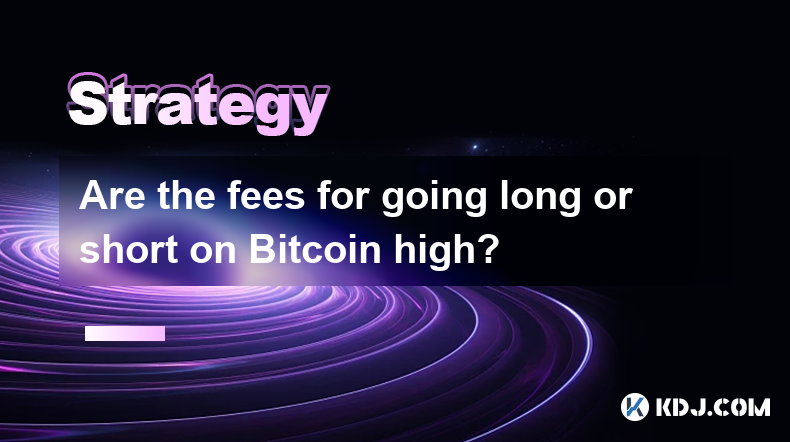
Key Points:
- Bitcoin trading fees vary significantly depending on the exchange used, the trading volume, and the type of order.
- Fees for long and short positions are generally similar, although some platforms might have subtle differences.
- Maker vs. taker fees are a common fee structure affecting both long and short positions.
- Leverage trading significantly impacts fees, often increasing costs exponentially.
- Understanding fee structures is crucial for maximizing profitability in Bitcoin trading.
Are the fees for going long or short on Bitcoin high?
The question of whether fees for going long or short on Bitcoin are high is complex. There's no single answer, as it heavily depends on the platform you choose and your trading style. Generally, the fees aren't prohibitively high for casual traders, but they can become significant for high-frequency traders or those using substantial leverage.
Exchange Fees: Different cryptocurrency exchanges have different fee structures. Some charge a flat fee per trade, while others use a tiered system based on your trading volume. The more you trade, the lower the fee per trade might become. This applies equally to both long and short positions.
Maker vs. Taker Fees: Many exchanges employ a maker-taker fee system. Maker fees are applied when you add liquidity to the order book (placing a limit order that doesn't immediately execute). Taker fees are charged when you remove liquidity (placing a market order that immediately executes). Both long and short trades can be maker or taker orders, influencing the fee paid.
Leverage and Fees: Leverage magnifies both potential profits and losses. Exchanges typically charge higher fees for leveraged trades, often expressed as a percentage of the position size. This means that even small fees can accumulate rapidly when using high leverage, making them a significant consideration for both long and short trades.
Spot vs. Futures Contracts: Spot trading involves buying or selling Bitcoin at the current market price. Futures contracts involve agreeing to buy or sell Bitcoin at a future date. Futures trading usually has different fee structures than spot trading, and these fees can vary based on the contract specifications and the exchange. Both long and short positions are possible in futures markets.
Trading Volume and Fees: High-volume traders often negotiate lower fees with exchanges. This applies regardless of whether they are predominantly taking long or short positions. The overall trading activity influences the negotiated fee structure.
Withdrawal Fees: Remember that transferring Bitcoin from the exchange to your personal wallet incurs withdrawal fees. These fees are unrelated to whether you went long or short; they're simply the cost of moving your assets.
Specific Examples of Fee Structures:
Let's illustrate with hypothetical examples. Imagine Exchange A charges 0.1% per trade and Exchange B charges 0.25% for taker orders and 0.05% for maker orders. If you place a $10,000 market order (taker) to go long on Bitcoin on Exchange A, the fee would be $10. On Exchange B, the fee would be $25. However, if you placed a limit order (maker), the fee on Exchange B would be just $5. The same fee structures apply if you're shorting Bitcoin.
Types of Orders and Fees:
- Market Orders: These execute immediately at the current market price. They typically incur higher taker fees.
- Limit Orders: These are placed at a specific price and only execute if the market reaches that price. They usually have lower maker fees or no fees at all on some exchanges.
- Stop-Loss Orders: These automatically sell your Bitcoin if the price drops below a certain level. The fees depend on whether the order executes as a market or limit order.
- Stop-Limit Orders: These combine elements of stop-loss and limit orders, offering more control but potentially higher fees depending on execution.
Beyond Trading Fees:
It's crucial to remember that fees aren't the only cost associated with Bitcoin trading. There are also potential slippage costs (the difference between the expected price and the actual execution price) and funding rates (in futures markets). These can affect profitability regardless of whether your position is long or short.
Common Questions and Answers:
Q: Are fees for long and short positions always the same?
A: Generally, yes, most exchanges have symmetrical fee structures for long and short positions. However, subtle differences might exist depending on the specific order type and the exchange's fee schedule.
Q: How can I minimize my Bitcoin trading fees?
A: Choose an exchange with competitive fees, utilize maker orders when possible, increase your trading volume to access lower tiered fees, and avoid excessive leverage.
Q: Do all exchanges use the same fee structure?
A: No, fee structures vary significantly between exchanges. Some use flat fees, others use tiered systems, and some use maker-taker models. Always check the specific fee schedule of your chosen exchange.
Q: Are fees higher for leveraged Bitcoin trading?
A: Yes, leveraged trading typically incurs significantly higher fees than spot trading, often charged as a percentage of the position size. These fees can quickly erode profits, even if the trade is successful.
Q: What are funding rates, and how do they affect fees?
A: Funding rates are payments made between long and short positions in perpetual futures contracts to maintain price parity with the underlying spot market. While not strictly trading fees, they represent an ongoing cost or income depending on your position and the market conditions, impacting overall profitability.
Disclaimer:info@kdj.com
The information provided is not trading advice. kdj.com does not assume any responsibility for any investments made based on the information provided in this article. Cryptocurrencies are highly volatile and it is highly recommended that you invest with caution after thorough research!
If you believe that the content used on this website infringes your copyright, please contact us immediately (info@kdj.com) and we will delete it promptly.
- Tether to Acquire Majority Stake in Adecoagro; Bioceres Allegedly Next
- 2025-04-07 05:15:13
- Renowned Crypto Investor Has Outlined a Brave XRP Price Prediction
- 2025-04-07 05:15:13
- Toncoin (TON) Price Regains Traction and Might Soon Surge Further Toward the $4.80 Resistance Zone
- 2025-04-07 05:10:12
- The cryptocurrency mining landscape in 2025 is flourishing, with cloud mining shining as a highly accessible
- 2025-04-07 05:10:12
- Solaxy (SOLX) Raises $28M in Presale, Aiming to Be the Arbitrum of Solana
- 2025-04-07 05:05:13
- BingX Launches Perpetual Trading on TradingView
- 2025-04-07 05:05:13
Related knowledge
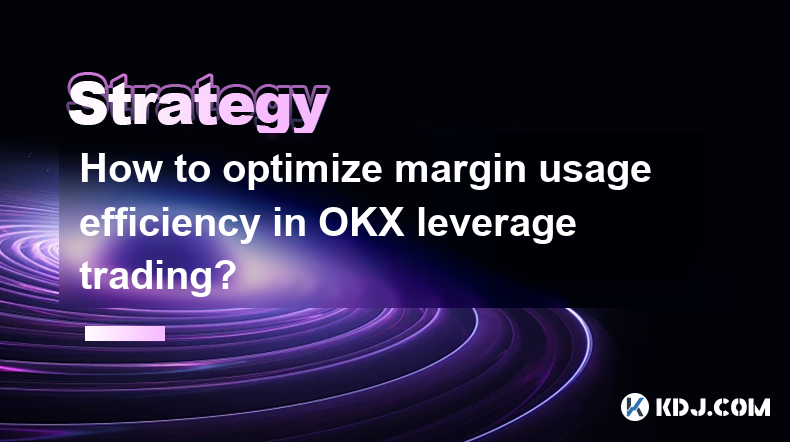
How to optimize margin usage efficiency in OKX leverage trading?
Apr 04,2025 at 03:21pm
Margin usage efficiency is a critical aspect of leverage trading on platforms like OKX, where traders aim to maximize their returns while managing risk. Understanding how to optimize margin usage can significantly enhance your trading performance. This article will delve into various strategies and techniques to help you make the most out of your margin...
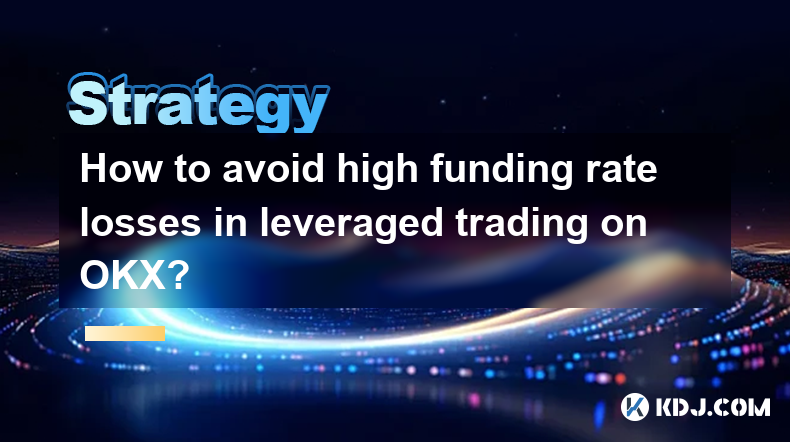
How to avoid high funding rate losses in leveraged trading on OKX?
Apr 04,2025 at 05:28pm
Understanding Funding Rates in Leveraged Trading on OKXFunding rates are a critical component of leveraged trading on platforms like OKX. They represent the periodic payments made between traders to maintain the balance between the futures price and the spot price of the underlying asset. When trading with leverage, understanding and managing funding ra...
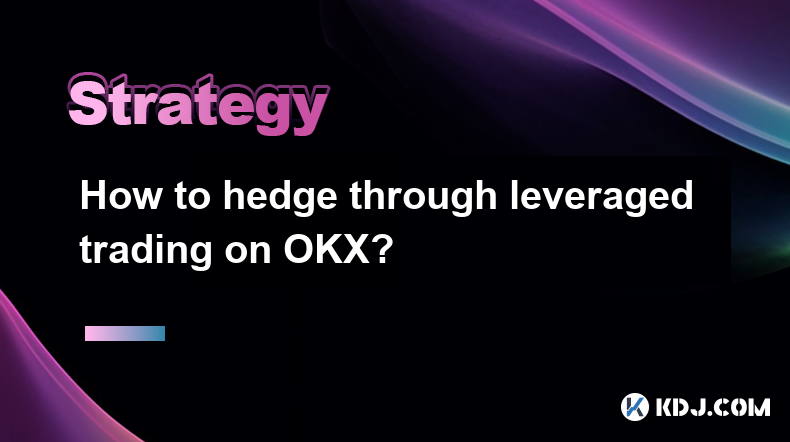
How to hedge through leveraged trading on OKX?
Apr 04,2025 at 01:42pm
Hedging through leveraged trading on OKX can be an effective strategy for managing risk in the volatile cryptocurrency market. This article will guide you through the process of setting up and executing a hedging strategy using OKX's leveraged trading features. We will cover the basics of leveraged trading, how to set up a hedge, and the steps to execut...
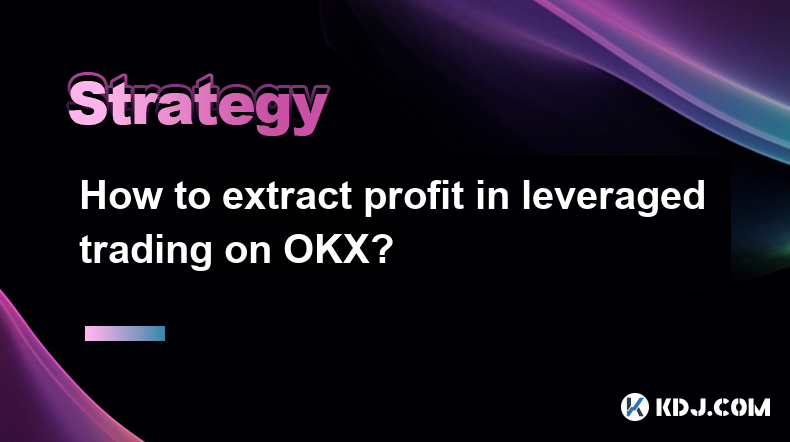
How to extract profit in leveraged trading on OKX?
Apr 04,2025 at 05:42am
Leveraged trading on OKX can be a powerful tool for traders looking to amplify their potential profits. However, it also comes with increased risk, making it essential to understand how to effectively extract profit from these trades. This article will guide you through the process of leveraging OKX's platform to maximize your gains while managing the i...
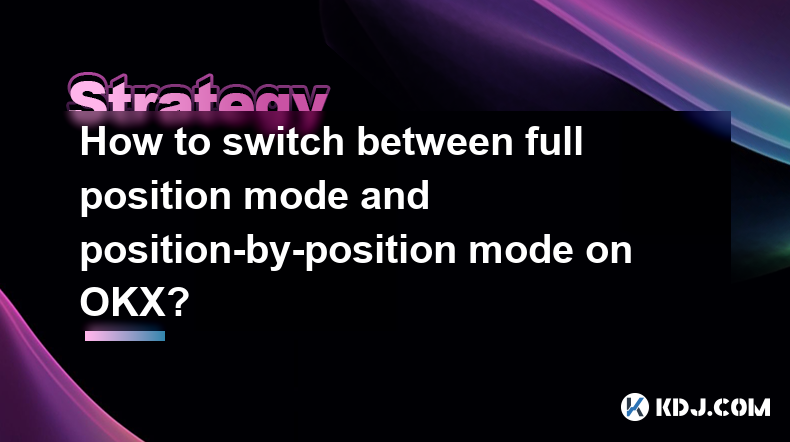
How to switch between full position mode and position-by-position mode on OKX?
Apr 06,2025 at 11:50am
Switching between full position mode and position-by-position mode on OKX can be crucial for managing your trading strategy effectively. Understanding the differences between these modes and knowing how to switch them is essential for any trader. In this article, we will guide you through the process step-by-step, ensuring you can easily navigate these ...
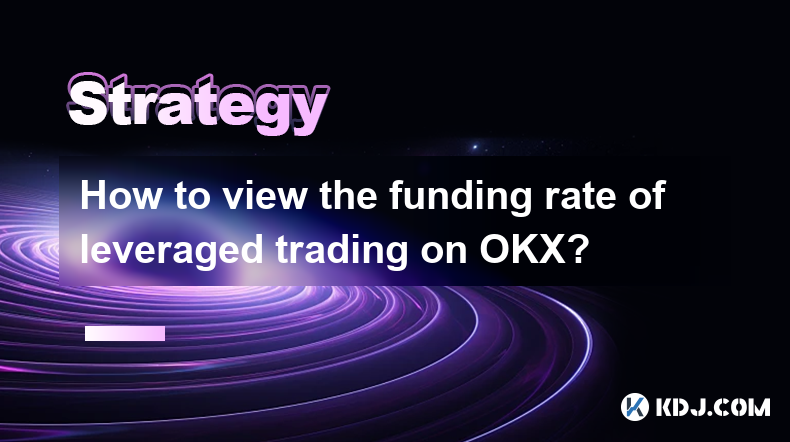
How to view the funding rate of leveraged trading on OKX?
Apr 04,2025 at 07:07am
Understanding the funding rate is crucial for anyone involved in leveraged trading on OKX. The funding rate is a mechanism used in perpetual futures contracts to ensure that the market price of the futures remains closely aligned with the spot price of the underlying asset. This article will guide you through the process of viewing the funding rate on O...

How to optimize margin usage efficiency in OKX leverage trading?
Apr 04,2025 at 03:21pm
Margin usage efficiency is a critical aspect of leverage trading on platforms like OKX, where traders aim to maximize their returns while managing risk. Understanding how to optimize margin usage can significantly enhance your trading performance. This article will delve into various strategies and techniques to help you make the most out of your margin...

How to avoid high funding rate losses in leveraged trading on OKX?
Apr 04,2025 at 05:28pm
Understanding Funding Rates in Leveraged Trading on OKXFunding rates are a critical component of leveraged trading on platforms like OKX. They represent the periodic payments made between traders to maintain the balance between the futures price and the spot price of the underlying asset. When trading with leverage, understanding and managing funding ra...

How to hedge through leveraged trading on OKX?
Apr 04,2025 at 01:42pm
Hedging through leveraged trading on OKX can be an effective strategy for managing risk in the volatile cryptocurrency market. This article will guide you through the process of setting up and executing a hedging strategy using OKX's leveraged trading features. We will cover the basics of leveraged trading, how to set up a hedge, and the steps to execut...

How to extract profit in leveraged trading on OKX?
Apr 04,2025 at 05:42am
Leveraged trading on OKX can be a powerful tool for traders looking to amplify their potential profits. However, it also comes with increased risk, making it essential to understand how to effectively extract profit from these trades. This article will guide you through the process of leveraging OKX's platform to maximize your gains while managing the i...

How to switch between full position mode and position-by-position mode on OKX?
Apr 06,2025 at 11:50am
Switching between full position mode and position-by-position mode on OKX can be crucial for managing your trading strategy effectively. Understanding the differences between these modes and knowing how to switch them is essential for any trader. In this article, we will guide you through the process step-by-step, ensuring you can easily navigate these ...

How to view the funding rate of leveraged trading on OKX?
Apr 04,2025 at 07:07am
Understanding the funding rate is crucial for anyone involved in leveraged trading on OKX. The funding rate is a mechanism used in perpetual futures contracts to ensure that the market price of the futures remains closely aligned with the spot price of the underlying asset. This article will guide you through the process of viewing the funding rate on O...
See all articles





















































































